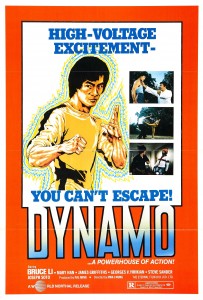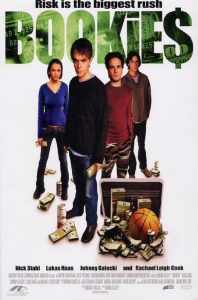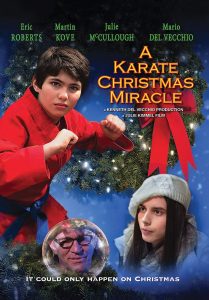 Are you putting some of the top casinos in the U.S. on your road trip agenda?
Are you putting some of the top casinos in the U.S. on your road trip agenda?
Feel like gambling with the greats? Here are the seven best in America.
Planning a trip to a casino this year? You’re not alone. More than 50 million people visit casinos in the US each year.
If a trip to a casino for a little gambling is in your future, surely you’ll want to check out one of the top casinos in the US. While Las Vegas is what most people think of when great casinos come to mind, you can hit up some great locations all over the country.
Here are 6 of the top casinos in the US to include in your next gambling adventure.
1. The Wynn, Las Vegas
The Wynn Las Vegas has been winning awards and getting 5-star reviews since it opened in 2005. It features over 2,700 hotel rooms and also has a second, even more luxurious resort, The Encore, attached to it.
The casino is full of flowers, sky-lit art, and state-of-the-art gaming. Whether you want to gamble poolside, in a high-limit salon, or at their large and comfortable sportsbook, the Wynn has something for everyone.
When you need a break from the tables, check out one of the restaurants at the Wynn. They have more Michelin 4-star restaurants than any other resort in North America. From Italian to steakhouse to Chinese, the Wynn has many options to choose from.
After you fill up, check out the indoor botanical garden, visit the spa, or golf. The Wynn boasts the only 18-hole golf course on the Las Vegas Strip.
2. The Borgata, Atlantic City
The Borgata opened in Atlantic City in 2003 and spurred other developers to build large, Vegas-style casinos in the city. Since it opened, the Borgata has led Atlantic City casinos in revenue.
The casino has every gambling option you could want, including a sportsbook to bet on sports games and horse racing, since it was legalized across the country in 2018.
It has all of the luxuries of a Las Vegas casino, like 5-star restaurants by Bobby Flay and Wolfgang Puck, nightclubs, and a massive two-story spa that has a barbershop, fitness center, pool, and salon.
If you’re an avid TV watcher, you might have seen the Borgata on shows like The Real Housewives of New Jersey, The Sopranos, or Impractical Joker.
3. Peppermill Resort Spa and Casino, Reno
We’re heading back to Nevada for the next casino on our list. The Peppermill Resort in Reno offers you the luxury of a Vegas casino in a smaller environment. From slot machines to table games to a sportsbook, the casino has what you’re looking for.
The spa is spectacular, with three stories, the only Caladarium in Northern Nevada, an indoor pool, sundeck, and salon. After relaxing in the spa, head outside to one of the pools or jetted spas and then enjoy a meal at one of their 10 award-winning restaurants.
The Peppermill is also committed to sustainability and has a number of Green initiatives, including geothermal heating energy, water recycling, paperless Human Resources department, and participation in Clean the World’s Hotel Recycling Program.
4. Foxwoods Resort Casino, Connecticut
Head east again to visit the Foxwoods Resort Casino in Mashantucket, Connecticut. The Foxwoods used to be the largest casino in the world, and while it isn’t the largest any longer, it still is one of the best.
In addition to the traditional casino games, Foxwoods also offers the PLAY Arena, which allows you to play all of your favorite games from one station. You can pick the lighting, music, video, and mood of your playing experience. Foxwoods also has 35 different restaurants, from quick service, casual dining to fine dining.
When you want a break from gambling, take a ride down the road from the casino to the Mashantucket Pequot Museum and Research Center, one of the largest Native American museums in the world.
5. Horseshoe Casino, Mississippi
If Atlantic City is the east coast equivalent of Las Vegas, Tunica, Mississippi is the southern counterpart to Vegas. The Horseshoe Casino has a luxurious tower with over 300 suites and a hotel with over 500 standard rooms that are anything but ordinary.
From table games to slots to the poker room to the sportsbook, The Horseshoe has all of the gaming you could want, all at the best odds around.
Tunica is a short 30-minute drive from Memphis, so it attracts big-name entertainers, including bands, singers, and comedians like Tracy Morgan.
6. Caesars Palace, Las Vegas
Caesars has been around since the 1960s, building a casino empire in Las Vegas and beyond. Their flagship casino, located in Las Vegas, is instantly recognizable. You’ve probably seen it in movies like Rocky III, Rain Man, Ocean’s Eleven, Iron Man, and all three Hangover movies.
The casino has all of the standard amenities, but if you’re looking for other things to do, take a dip in one of the pools designed to look like a Roman bath, check out the Pussycat Dolls Lounge, or spend your winnings in the Forum Shops, which offers over 630,000 square feet of shopping. From Louis Vuitton to Sephora, the Forum Shops have a wide range of stores.
And, in traditional Vegas style, it has big-name performers, like Celine Dion, Elton John, Frank Sinatra, and Rod Stewart.
Before you head out to your next casino, be sure to give these demo slots a go-to practice your slot betting strategy without risk.
The Top Casinos in the US for Your Next Gambling Trip
This list is the surface of the top casinos in the US. There are countless more if you really want to expand your casino adventures. Whether it’s a high-end hotel, high stakes tables, or a personalized experience you’re looking for, from California to Connecticut, you can have a great casino experience across the US.
If you liked this post, be sure to explore our site and check out some of our other blog posts as well.














 Are you putting some of the top casinos in the U.S. on your road trip agenda?
Are you putting some of the top casinos in the U.S. on your road trip agenda? 






Be the 1st to Comment